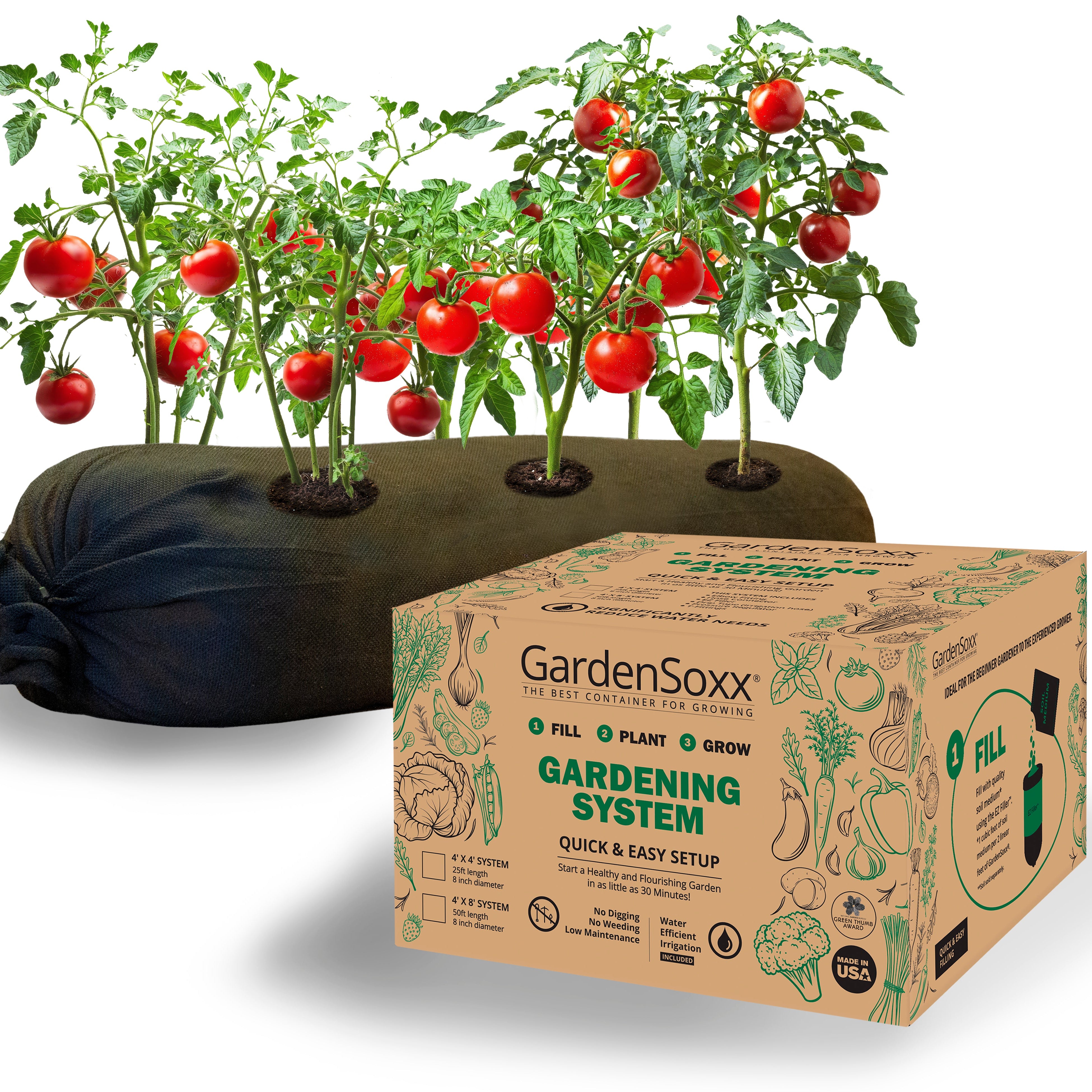Cabbage
As one of the most nutritious vegetables in the human diet, knowing how to grow cabbage is an excellent way to incorporate this superfood into your home-cooked meals. This hearty vegetable is used in a wide variety of raw and cooked dishes; it stores extremely well for winter use and can also be preserved for longer periods by making it into sauerkraut or kimchi.
While it requires a bit more room in the garden, one cabbage head can typically be used for multiple meals, allowing you to get more from just one plant. Cabbage grows best in the cooler temperatures of early spring, so starting your seeds indoors in late winter will give you a head start. Alternatively, they can be planted outdoors later in the spring for a plentiful harvest of cabbage plants for fall.

Growing cabbage in GardenSoxx® | Plant Family: Brassicaceae
Different Varieties of Cabbage
With over 400 different varieties of cabbage available to choose from, it may be challenging to pick the right one for your garden; we have narrowed the list down to a few popular cabbage plant varieties that may pique your interest.
If you are new to growing cabbage, the Tropic Giant variety is a great choice that matures in as little as 80 days. It grows well in warmer climates and can be planted at any point during the growing season. Because it is quite resistant to disease, it is less challenging to grow than some other varieties.
For unparalleled flavor and easy long-term storage, the Charleston Wakefield also boasts a unique cone shape and is quite tolerant to heat. Maturing in about 70 days or so, this heirloom green is a reliable choice for home-growers.
If your preference is to grow purple cabbage plants instead of green, the Red Acre variety offers a more compact cabbage head, making it ideal for smaller spaces. This delicious cultivar is easy to grow and matures in only 65 days.
For a cool-weather cabbage that grows well even in poor soil, the Savoy Express is a great option for very early spring or late summer planting. Reaching maturity in 55 days, this quick-growing cultivar has a lovely, sweet taste perfect in slaw or other fresh and light dishes.
For something deliciously different, try a Napa Cabbage variety; either compact or full size depending how much space you have. This easy-to-grow variety is especially tender, making it versatile in raw or cooked recipes and it typically has a shorter seed-to-harvest time around 60 days.
Nutritional Information For Cabbage
Nutritional Facts - per 100/g
| Nutrient | Amount | % Daily Value |
|---|---|---|
| Calories | 25 | - |
| Total Fat | 0.1 g | - |
| Sodium | 18 mg | - |
| Potassium | 170 mg | - |
| Dietary Fiber | 2.6 g | - |
| Sugar | 3.2 g | - |
| Protein | 1.3 g | - |
| Vitamin C | - | 60% |
| Iron | - | 2% |
| Vitamin B6 | - | 5% |
| Magnesium | - | 3% |
| Calcium | - | 4% |
How to Grow Cabbage in Your GardenSoxx®
We recommend starting cabbage seeds indoors, at least 5 weeks before the last frost. If using a purchased seedling, it can go in the garden about 2 weeks before the last frost date. Cooler weather will give cabbage a good head start and set the plant up for success. Plant 18 inches apart to give the plant a large enough space to grow and form a sizeable head. They should be grown in full sun and watered evenly for best results.
Cabbage Seed to Harvest Time: 80 - 180 days (can vary based on the variety of cabbage - check package instructions for most accurate information)

How to Harvest Cabbage
Depending on what growing zone you are in and the variety of cabbage that you grow, you may be able to harvest multiple times from the same plant. Harvest by cutting off just the head (once it is between 5-10 inches in diameter), leaving as many outer leaves on the base as possible.



















































